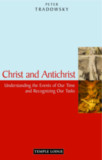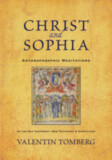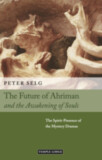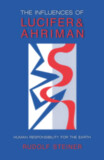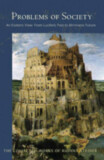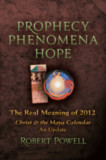The Incarnation of Ahriman
The Embodiment of Evil on Earth
- Publisher
Rudolf Steiner Press - Published
1st July 2006 - ISBN 9781855841789
- Language English
- Pages 128 pp.
7 selected lectures, various cities, October 27 – December 28, 1919
Ahriman is a significant figure of Persian mythology. Rudolf Steiner, however, spoke of Ahriman as an actual, living spiritual entity. This being, he said, works to embed human beings firmly into their physicality, thus encouraging dull, materialistic attitudes and a coarse, dry intellect. In these extraordinary lectures, Steiner assumes a rare prophetic mode. He talks about an actual incarnation of Ahriman on Earth and the potential consequences of this event. Just as Christ incarnated in a physical body, so would Ahriman incarnate in the Western world—before “a part” of the third millennium has passed.
Steiner places this incarnation in the context of a “cosmic triad” that includes Ahriman, Lucifer, and Christ. Ahriman will incarnate as a counterpoint to the physical incarnation of Lucifer, which took place in the East during the third millennium BC. The incarnation of Jesus Christ took place in Palestine as the point of balance between the two.
During the period when Steiner developed Anthroposophy—a teaching career of more than twenty years that included over than six thousand lectures—he spoke of Ahriman’s incarnation only six times. For the first time, these six lectures (plus a supporting excerpt) are reproduced in their entirety in a single volume.
Rudolf Steiner
Rudolf Steiner (b. Rudolf Joseph Lorenz Steiner, 1861–1925) was born in the small village of Kraljevec, Austro-Hungarian Empire (now in Croatia), where he grew up. As a young man, he lived in Weimar and Berlin, where he became a well-published scientific, literary, and philosophical scholar, known especially for his work with Goethe’s scientific writings. Steiner termed his spiritual philosophy anthroposophy, meaning “wisdom of the human being.” As an exceptionally developed seer, he based his work on direct knowledge and perception of spiritual dimensions. He initiated a modern, universal “spiritual science” that is accessible to anyone willing to exercise clear and unbiased thinking. From his spiritual investigations, Steiner provided suggestions for the renewal of numerous activities, including education (general and for special needs), agriculture, medicine, economics, architecture, science, philosophy, Christianity, and the arts. There are currently thousands of schools, clinics, farms, and initiatives in other fields that involve practical work based on the principles Steiner developed. His many published works feature his research into the spiritual nature of human beings, the evolution of the world and humanity, and methods for personal development. He wrote some thirty books and delivered more than six thousand lectures throughout much of Europe. In 1924, Steiner founded the General Anthroposophical Society, which today has branches around the world.



